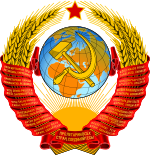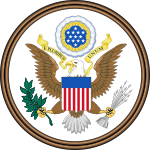User:Falcaorib/Soviet Union and United States comparison
Jump to navigation
Jump to search
Soviet Union and United States comparison
- ^ "United States". Encyclopædia Britannica. Retrieved January 31, 2010.
- ^ "Military Expenditure Database: Data for all countries from 1988–2019 in constant (2018) USD" (PDF). Stockholm International Peace Research Institute. sipri.org. Retrieved 14 April 2021.
- ^ "Military Expenditure Database: Data for all countries from 1988–2019 in constant (2018) USD" (PDF). Stockholm International Peace Research Institute. sipri.org. Retrieved 14 April 2021.
- ^ Thomas C. Foley. "ARMOR, September-October 1989 Edition" (PDF). U.S. Army Fort Benning and The Maneuver Center of Excellence. benning.army.mil/. p. 6. Retrieved 10 May 2021.
- ^ The future of U.S.-Soviet relations hearings before the Committee on Foreign Relations, United States Senate, One Hundred First Congress, first session, April 4, 12, 19 and May 3, 15, 18 and June 1 and 20, 1989 (Microfiche) (National government publication ed.). Washington : U.S. G.P.O. p. 399. Retrieved 11 May 2021.
- ^ Boston, Scott; Johnson, Michael; Beauchamp-Mustafaga, Nathan; Crane, Yvonne K. (5 February 2018). "Assessing the Conventional Force Imbalance in Europe Implications for Countering Russian Local Superiority". RAND Corporation. rand.org. Retrieved 14 April 2021.
- ^ "Soviet Navy Ships - 1945-1990 - Cold War". GlobalSecurity.org.
- ^ "The U.S. Navy in the World (1981-1990): Context for U.S. Navy Capstone Strategies and Concepts" (PDF). CNA. cna.org. Retrieved 14 April 2021.
- ^ a b "Arsenal of Airpower". the99percenters.net. March 13, 2012. Retrieved July 28, 2016 – via Washington Post.[permanent dead link]
- ^ "Arsenal of Airpower: USAF Aircraft Inventory 1950-2009" (PDF). Air Force Association. afa.org. Retrieved 14 April 2021.
- ^ "Arsenal of Airpower: USAF Aircraft Inventory 1950-2009" (PDF). Air Force Association. afa.org. p. 23. Retrieved 10 May 2021.
- ^ "Arsenal of Airpower: USAF Aircraft Inventory 1950-2009" (PDF). Air Force Association. afa.org. p. 23. Retrieved 10 May 2021.
- ^ Kristensen, Hans M.; Norris, Robert S. (2013). "Global nuclear weapons inventories, 1945–2013". Bulletin of the Atomic Scientists. 69 (5). tandfonline.com: 75–81. Bibcode:2013BuAtS..69e..75K. doi:10.1177/0096340213501363. S2CID 145692541. Retrieved 15 April 2021.



